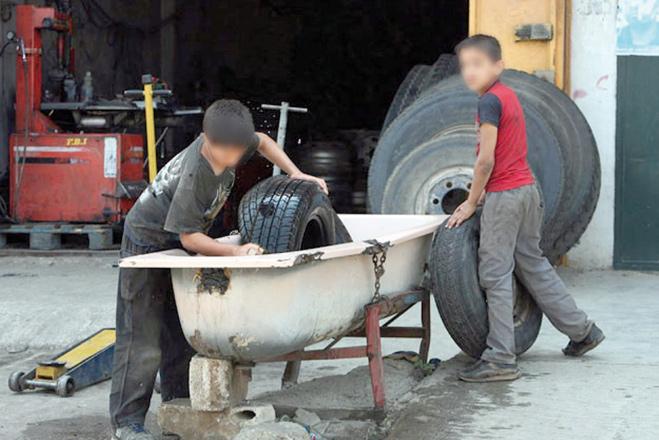You are here
Child labour doubles in decade — survey
By Khetam Malkawi - Aug 16,2016 - Last updated at Aug 16,2016

Most child workers are employed in the wholesale and retail trades, as well as the agriculture, forestry and fishing industries, and on average they work over 33 hours a week, according to a report released on Tuesday (Petra file photo)
AMMAN — The number of child labourers in Jordan has almost doubled in less than 10 years, and over half of them are employed in hazardous work, according to a report released on Tuesday.
Some 75,982 children between the ages of 5 and 17 are working in Jordan, according to the National Child Labour Survey, which was developed by national institutions and supported by the International Labour Organisation (ILO).
The figure shows a two-fold rise since the last survey was conducted in 2007, when 33,190 children were found to be working.
Currently, 1.89 per cent of the 4 million children in Jordan are employed, according to the report, which surveyed all nationalities.
Most child workers are employed in the wholesale and retail trades, as well as the agriculture, forestry and fishing industries, and on average they work over 33 hours a week.
Children are exposed to a number of hazards, including dust fumes and exposure to physical and psychological abuse, the survey found.
Some 88.3 per cent of child labourers are boys, while 80 per cent are Jordanian and 14.6 per cent are Syrian, according to the survey, which covered all governorates and the Zaatari camp for Syrian refugees.
The highest number of child workers was found in the capital, where 27,651 children are employed, accounting for 1.6 per cent of Amman’s population.
Some 13,899 children work in Irbid, representing 1.8 per cent of the population, and 9,523 minors work in Zarqa, making up 1.6 per cent of the population.
The lowest concentration of child labourers was found in Balqa, where 1,952 children are employed, constituting 0.9 per cent of the population.
Syrian refugees
The survey also found that Syrian refugee children have the lowest school attendance rate, and Syrian children labourers earn lower wages than Jordanian children, an indication that they are more vulnerable to exploitation.
It found that the worker-to-population ratio is highest among Syrian children at 3.22 per cent, followed by other nationalities at 1.98 per cent and Jordanians at 1.75 per cent.
In a statement issued at the launch of the survey, the ILO said it was deeply concerned by the rise in the number of children that have been forced into work, often under potentially dangerous conditions.
“We are concerned by the increase in child labour in Jordan,” said Insaf Nizam, chief technical advisor at the ILO’s project to end child labour in the Kingdom.
“But we also acknowledge that the efforts of all actors have yielded some positive results in keeping the percentage of child labour under control in spite of challenging socio-economic circumstances,” he added.
The survey was implemented by the University of Jordan’s Centre for Strategic Studies in collaboration with the Ministry of Labour and the Department of Statistics.
Its findings were based on a sample of over 20,000 households from across the country, designed to generate estimates disaggregated from all 12 governorates, including the Zaatari camp, the largest Syrian refugee camp in Jordan.
Child labour in numbers 89% of the 4 million children in Jordan are employed 88.3% of child labourers are boys 80% are Jordanian 14.6% are Syrian 27,651 children are employed in Amman, accounting for 1.6% of its population 13,899 children work in Irbid (1.8% of the population) 9,523 minors work in Zarqa (1.6% of the population) 1,952 children are employed in Balqa (0.95 of the population)
Source: National Child Labour Survey |
Related Articles
The unemployment rate among Jordanians has increased from 14.5 per cent prior to the Syrian crisis in 2011 to 22.1 per cent at present, according to a recent report by international organisations.
Nearly a quarter of the children employed in the agriculture sector in Mafraq and the Jordan Valley sustained work-related injuries, according to a report released on Monday.
AMMAN — The Jordanian legislative provisions condemning child labour have not curtailed the expansion of the issue in the Kingdom over the p












